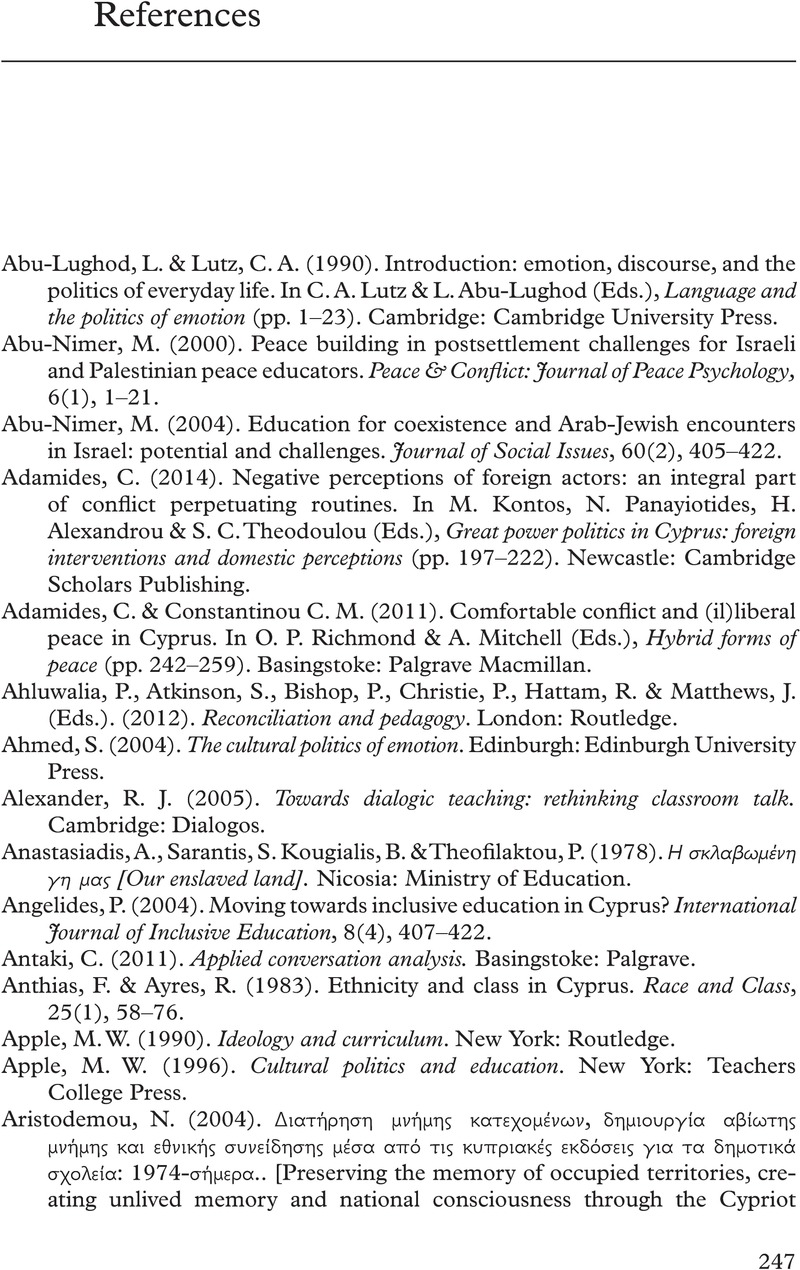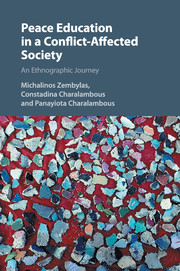Book contents
- Peace Education in a Conflict-Affected Society
- Peace Education in a Conflict-Affected Society
- Copyright page
- Contents
- Figures
- Tables
- Acknowledgements
- Introduction
- Part I Setting the scene: theory, methodology and context
- Part II Teachers’ responses to a peace education initiative
- Part III Mapping teachers’ practices in a changing context
- Part IV The impact of teacher training workshops
- Epilogue
- Appendices
- References
- Index
- References
References
Published online by Cambridge University Press: 05 May 2016
- Peace Education in a Conflict-Affected Society
- Peace Education in a Conflict-Affected Society
- Copyright page
- Contents
- Figures
- Tables
- Acknowledgements
- Introduction
- Part I Setting the scene: theory, methodology and context
- Part II Teachers’ responses to a peace education initiative
- Part III Mapping teachers’ practices in a changing context
- Part IV The impact of teacher training workshops
- Epilogue
- Appendices
- References
- Index
- References
Summary

- Type
- Chapter
- Information
- Peace Education in a Conflict-Affected SocietyAn Ethnographic Journey, pp. 247 - 265Publisher: Cambridge University PressPrint publication year: 2016



